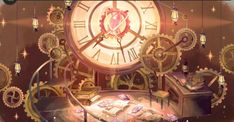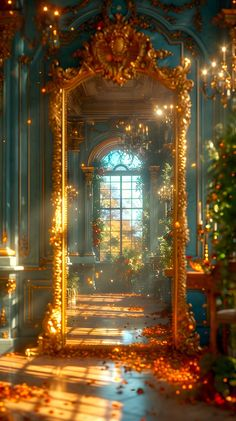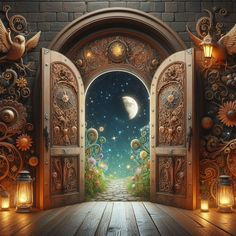Were there specific techniques you used to evoke a sense of place or time?

Immersing players into a world that feels both timeless and otherworldly is no easy task. For Clockwork Palace, the cinematic screen was a canvas to convey a sense of place and time—a world steeped in melancholy, wonder, and the echoes of a collapsed timeline.

Artist’s Insight: Here’s how our 2D artist Zoha brought this vision to life:
"The constant moonlight bathes the scene in soft blues and silvers, while long shadows stretch endlessly, evoking a sense of quiet permanence. To emphasize the concept of being 'stuck in time,' I incorporated symbolic details like broken clocks, fallen pillars, cracked floors, a pendulum frozen mid-swing, rusted pipes, and ancient gears turning purposelessly. The architecture merges ruins from various eras, all weathered equally and overtaken by nature—suggesting a timeline that has collapsed into itself."
"The atmosphere carries an ethereal quality—motionless stars, fog that lingers as if suspended, still water in channels, and glowing lanterns casting a warm yet fragile light. Together, these elements weave a narrative of a world trapped in its own past, frozen in a cycle of decay and beauty."
Why It Matters Every visual detail in Clockwork Palace serves to immerse players in its rich storytelling. By blending symbolic elements with intricate design, the cinematic screen doesn’t just set the scene—it tells a story of a world where time itself has unraveled, creating a unique blend of wonder and melancholy.


